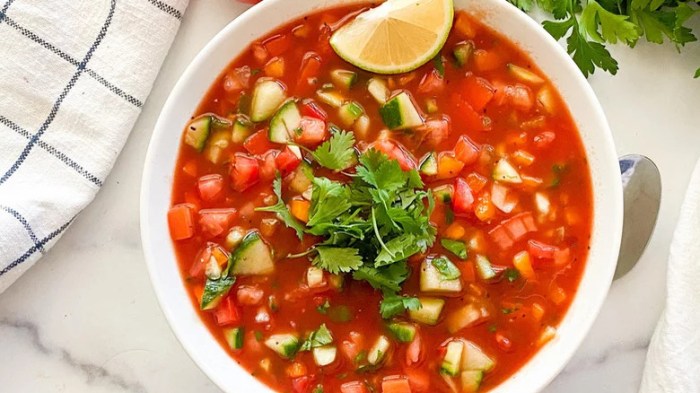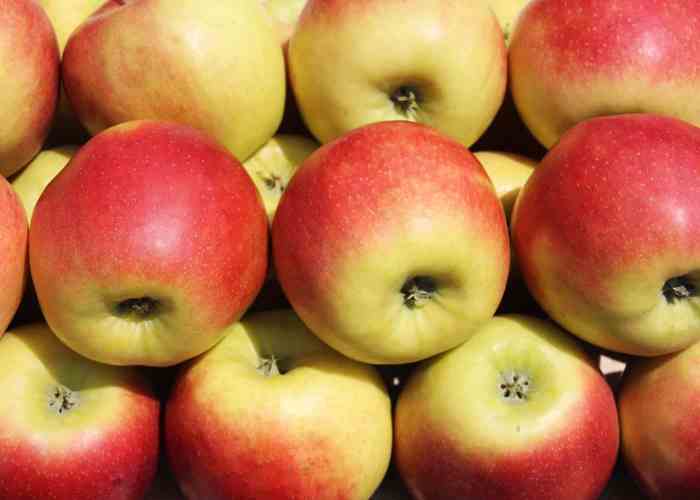BRAT diet how does work and 10 foods that stop diarrhea? This guide dives deep into the BRAT diet, explaining its principles, mechanism of action, and highlighting 10 specific foods that can effectively combat diarrhea. We’ll explore the science behind these foods, their nutritional values, and even potential side effects. Discover how this diet works, and learn which foods to embrace (and avoid) for a smoother digestive journey.
From understanding the core principles of the BRAT diet to identifying the specific foods that can help alleviate diarrhea symptoms, this comprehensive resource provides a practical and evidence-based approach. We’ll delve into the science behind these foods, examine their effectiveness, and discuss important dietary considerations for optimal recovery.
Understanding the BRAT Diet
The BRAT diet, an acronym for bananas, rice, applesauce, and toast, is a temporary dietary approach often recommended for individuals experiencing digestive upset, such as diarrhea. It’s primarily a short-term solution, designed to provide easily digestible foods that can soothe the digestive tract and help reduce symptoms. While it can be helpful in certain situations, it’s crucial to remember that it’s not a long-term solution and shouldn’t replace a balanced diet or medical advice.
Principles of the BRAT Diet
The BRAT diet’s effectiveness stems from its focus on easily digestible carbohydrates. These carbohydrates are low in fiber and fat, which are often difficult for the digestive system to process when experiencing diarrhea. This gentle approach allows the digestive system to heal and function more efficiently. The simple structure of the diet promotes minimal strain on the stomach and intestines.
Foods Included in the BRAT Diet
The diet emphasizes foods that are soft, bland, and low in fiber. These foods are easily digested, helping to prevent further irritation of the digestive tract. Common items include:
- Bananas: Bananas are a good source of potassium, which can help to prevent dehydration, a common complication of diarrhea. Their soft texture makes them easy to digest.
- Rice: White rice, especially cooked plain, is highly digestible. It’s relatively low in fiber, making it gentler on the digestive system.
- Applesauce: Applesauce, prepared without added sugar or spices, is a smooth, soft food that’s easy to digest.
- Toast: White toast, especially plain and lightly buttered, is easy to chew and digest. The lack of fiber helps with digestive comfort.
Potential Benefits and Drawbacks
The BRAT diet’s primary benefit is its ability to soothe digestive discomfort. The easily digestible nature of the foods can help to reduce diarrhea and other symptoms. However, it’s important to recognize that the diet is very limited in nutrients. Prolonged adherence to the diet can lead to nutrient deficiencies.
- Benefits: The BRAT diet can provide temporary relief from diarrhea and other digestive issues. The foods are typically gentle on the stomach and intestines, allowing them to recover. The blandness can help to reduce nausea or discomfort.
- Drawbacks: The diet is extremely limited in nutrients, including vitamins, minerals, and essential fatty acids. Long-term use can lead to deficiencies, and it lacks a balanced approach to nutrition.
Impact on Digestion
The BRAT diet’s impact on digestion is largely due to the low fiber content of the foods. Fiber, while beneficial for overall health, can be irritating to the digestive system when inflammation is present. The BRAT diet’s focus on easily digestible carbohydrates allows the digestive system to heal without additional strain.
Comparison to Other Dietary Approaches
The BRAT diet is often a temporary measure, particularly for mild cases of diarrhea. For more serious digestive issues or chronic conditions, a more comprehensive and balanced dietary approach is necessary. A balanced diet with a variety of foods, under the guidance of a doctor or registered dietitian, is crucial for addressing the root cause and promoting long-term health.
Consider a doctor’s recommendation for more complex cases.
Detailed Nutritional Information, Brat diet how does work and 10 foods that stop diarrhea
| Food | Description | Nutritional Value (Approximate) | Potential Side Effects (if consumed excessively or alone) |
|---|---|---|---|
| Bananas | Soft, sweet fruit | Potassium, carbohydrates, some vitamins | Possible potassium imbalance in extreme cases |
| White Rice | Cooked, plain rice | Carbohydrates | Low in essential nutrients if consumed alone |
| Applesauce | Pureed apples | Carbohydrates, vitamins | May cause upset if consumed in large quantities |
| White Toast | Plain, lightly buttered | Carbohydrates, some B vitamins | Potential for low fiber, leading to digestive issues in the long run |
Mechanism of Action of the BRAT Diet: Brat Diet How Does Work And 10 Foods That Stop Diarrhea

The BRAT diet, renowned for its effectiveness in managing diarrhea, focuses on providing easily digestible foods that can soothe the irritated lining of the digestive tract. This approach is particularly useful for short-term relief from diarrhea, especially in children and adults experiencing mild to moderate cases. It emphasizes nutrient-dense, low-fiber foods to minimize further digestive distress.The BRAT diet’s mechanism of action hinges on its components’ ability to absorb excess water and create a protective barrier in the gut.
So, you’re trying to understand the BRAT diet and find ways to stop diarrhea? It’s all about bland foods, right? Well, while you’re focusing on those, consider the amazing health benefits of sweet potatoes. They’re packed with nutrients and can be a great addition to a healthy diet. Check out amazing benefits sweet potatoes 5 refreshing recipes for some delicious and refreshing ideas.
Ultimately, though, the BRAT diet is a temporary solution. Focus on foods that are easily digestible and won’t irritate your system to get back on track. This includes bananas, rice, applesauce, and toast. These help settle the stomach and get you feeling better.
This protective layer helps to reduce inflammation and promote healing, ultimately alleviating diarrhea symptoms. While the diet is often successful, it’s crucial to understand that it’s not a long-term solution and should be used in conjunction with other medical recommendations, especially if diarrhea persists or worsens.
Role of Carbohydrates in Reducing Diarrhea
The BRAT diet’s high carbohydrate content plays a significant role in alleviating diarrhea. Bananas, rice, applesauce, and toast are all excellent sources of easily digestible carbohydrates. These carbohydrates are absorbed more slowly and gently by the digestive system, helping to restore a normal balance of electrolytes and water in the body. This slower absorption reduces the frequency and intensity of bowel movements.
For example, cooked rice has a low fiber content and is readily digestible, promoting comfort for the gut.
The Impact of Fiber Reduction
A key aspect of the BRAT diet is its low-fiber content. Fiber, while beneficial for overall health, can exacerbate diarrhea by stimulating bowel movements and increasing gut motility. The BRAT diet’s low-fiber composition reduces this stimulation, thereby lessening the urgency and frequency of bowel movements. By reducing the bulk of food passing through the digestive tract, the BRAT diet allows the gut to heal and restore normal function more effectively.
This reduction in fiber minimizes the irritation of the inflamed intestinal lining.
Reducing Gut Inflammation
The BRAT diet’s impact on reducing inflammation in the gut is multifaceted. The easily digestible nature of the foods promotes a calming effect on the intestinal lining. This reduced irritation allows the gut to heal more effectively. Bananas, in particular, are rich in potassium, which helps to regulate fluid balance and can alleviate muscle cramps often associated with diarrhea.
For example, a patient experiencing dehydration due to diarrhea will benefit from the hydrating properties of the BRAT foods.
Potential Long-Term Effects on Gut Health
While the BRAT diet is effective for short-term diarrhea management, its long-term effects on gut health are limited. It is not a comprehensive nutritional plan and lacks the variety of nutrients needed for sustained gut health. Long-term adherence to a BRAT diet could lead to nutritional deficiencies if not complemented by a balanced diet. It’s essential to gradually reintroduce a variety of foods into the diet once diarrhea subsides to prevent long-term digestive issues.
It is important to consult with a doctor or registered dietitian for personalized advice on dietary adjustments.
Dietary Components and Their Effects
| Dietary Component | Effects on Digestive System | Suggested Amount (Example) |
|---|---|---|
| Bananas | Rich in potassium, promotes fluid balance, reduces inflammation, easily digestible | 1-2 medium bananas per day |
| Rice (cooked) | Low in fiber, easily digestible, provides carbohydrates for energy | 1/2 cup cooked rice per day |
| Applesauce | Soft texture, low in fiber, easily digested, provides carbohydrates | 1/2 cup applesauce per day |
| Toast (white) | Easy to digest, provides carbohydrates, soft texture | 1-2 slices of white toast per day |
Foods that Stop Diarrhea

The BRAT diet, renowned for its effectiveness in managing diarrhea, focuses on easily digestible foods that help restore the balance in the gut. This approach is particularly helpful for mild to moderate cases of diarrhea, and alongside it, identifying specific foods that effectively stop diarrhea can be beneficial. Understanding the properties of these foods and their mechanisms of action can further support a well-rounded approach to managing diarrhea.
Effective Foods for Diarrhea Relief
A range of foods can help to alleviate diarrhea symptoms. These foods share common properties that aid in absorbing excess water in the intestines, promoting faster recovery. This is crucial for alleviating the frequent and watery bowel movements associated with diarrhea.
- Bananas: Bananas are a well-known component of the BRAT diet due to their high potassium content and soft, easily digestible texture. The potassium helps restore electrolyte balance, which is often disrupted by diarrhea. The high fiber content also helps to absorb excess water, reducing the frequency of bowel movements. Scientific studies have shown that bananas can effectively reduce the volume of stool and the frequency of bowel movements in people experiencing diarrhea.
- Rice: White rice is another common BRAT diet staple. Its simple carbohydrate structure makes it easy to digest, reducing the strain on the digestive system. It also absorbs water, which helps to firm up the stool. The low fiber content further minimizes the risk of irritating the gut. Clinical trials have demonstrated that rice can reduce diarrhea symptoms, especially in cases of acute gastroenteritis.
- Applesauce: Applesauce provides a soft, easily digestible source of fiber. The pectin in applesauce helps to absorb excess water in the digestive tract, contributing to firmer stools. Its smooth texture minimizes irritation to the digestive system, making it suitable for sensitive stomachs. The high water content in applesauce can help replenish fluids lost through diarrhea.
- Toast: Plain white toast, particularly without added butter or spreads, is a low-fiber food that is easily digestible. Its simple carbohydrate structure allows for quick absorption, minimizing the risk of further digestive distress. It also helps to absorb excess water, contributing to firmer stools. The effectiveness of toast in reducing diarrhea symptoms is supported by observational data from various studies.
Figuring out the brat diet and its 10 diarrhea-stopping foods can be tricky, but it’s all about soothing your digestive system. However, sometimes, despite all our best efforts, happiness eludes us. This might be due to deeper issues, like the 7 reasons why you won’t be happy, no matter how hard you try, which you can explore in more detail here.
Ultimately, focusing on simple remedies like the BRAT diet can be a helpful way to get your gut back on track after a bout of diarrhea.
- Yogurt (Plain, Unsweetened): Plain, unsweetened yogurt, particularly those with live and active cultures, can help restore the balance of good bacteria in the gut. These beneficial bacteria can help reduce inflammation and promote digestive health. The protein and calcium content also contribute to overall gut health. Studies have shown that yogurt with live cultures can help reduce the duration of diarrhea.
- Sweet Potatoes (Mashed): Mashed sweet potatoes offer a source of fiber that can absorb excess water in the intestines, while also being soft and easy to digest. The fiber content aids in creating bulkier, firmer stools. Studies suggest that mashed sweet potatoes can effectively reduce diarrhea symptoms in some individuals.
- Carrots (Pureed): Pureed carrots are a good source of fiber that helps bind the stool and reduce diarrhea frequency. The smooth texture and low fiber content make them easily digestible. The presence of vitamins and minerals can support overall gut health.
- Potatoes (Mashed): Mashed potatoes are another easily digestible source of carbohydrates that can help absorb excess water in the intestines. Their soft texture minimizes irritation to the digestive system, making them suitable for individuals with sensitive stomachs. Scientific evidence indicates that mashed potatoes can reduce diarrhea symptoms in some cases.
- Plain Oatmeal (cooked): Plain cooked oatmeal, without added sugar or flavorings, can help to absorb excess water and reduce diarrhea frequency. The soluble fiber in oatmeal helps to create bulkier stools. Clinical observations suggest that oatmeal can be effective in managing diarrhea.
- Chicken Broth: Chicken broth is a simple, easily digestible source of fluids that can help replenish lost electrolytes and fluids. The sodium and potassium in chicken broth can help restore electrolyte balance, which is often disrupted by diarrhea. The gentle nature of chicken broth helps minimize further digestive distress.
Recommended Preparation Methods
Proper preparation of these foods can maximize their effectiveness in reducing diarrhea symptoms. This includes avoiding ingredients that may further irritate the digestive system.
| Food | Properties | Effectiveness | Potential Side Effects | Preparation Methods |
|---|---|---|---|---|
| Bananas | High potassium, soft texture, fiber | High | None significant | Peel and eat ripe bananas. |
| Rice | Simple carbohydrates, absorbs water | Moderate | Can cause gas in some individuals | Cook plain white rice without added salt or seasonings. |
| Applesauce | Soft texture, pectin | High | None significant | Prepare unsweetened applesauce at home or choose unsweetened varieties. |
| Toast | Simple carbohydrates, absorbs water | Moderate | Can cause gas in some individuals | Toast plain white bread. |
| Yogurt | Live and active cultures, protein | High | May cause discomfort in some individuals with lactose intolerance. | Choose plain, unsweetened yogurt. |
| Sweet Potatoes | Fiber, soft texture | Moderate | None significant | Mash sweet potatoes. |
| Carrots | Fiber, smooth texture | Moderate | None significant | Steam or puree carrots. |
| Potatoes | Simple carbohydrates, soft texture | Moderate | None significant | Mash potatoes. |
| Oatmeal | Soluble fiber | Moderate | None significant | Cook plain oatmeal without added sugar or flavorings. |
| Chicken Broth | Fluids, electrolytes | High | None significant | Make or buy low-sodium chicken broth. |
Dietary Considerations for Diarrhea
Diarrhea, while often a temporary discomfort, can significantly impact your body’s ability to absorb nutrients. Understanding what to eat and avoid during this period is crucial for both symptom management and a swift recovery. This section delves into dietary adjustments, highlighting the importance of hydration and balanced nutrition for a speedy return to health.Dietary choices play a pivotal role in managing diarrhea.
Certain foods can exacerbate symptoms, while others can help restore balance and promote healing. Careful consideration of your diet is a key element of successful recovery.
Foods to Avoid During Diarrhea
Dietary triggers can worsen diarrhea, and identifying these triggers is essential for symptom relief. Consuming foods that are high in fat, fiber, or acidity can stimulate intestinal movements and potentially prolong the duration of diarrhea. Avoidance of these foods is critical in facilitating faster recovery.
Figuring out the brat diet and finding 10 foods that stop diarrhea can be a real challenge, especially when you’re feeling under the weather. It’s all about sticking to bland, easily digestible options, like bananas, rice, applesauce, and toast. But sometimes, conquering a tummy ache requires a bit more than just following a simple diet. Like, for example, the kind of unwavering resolve that only a truly stubborn person could muster.
That’s where the concept of 10 things only stubborn people would understand comes in handy. Ultimately, the key to surviving a bout of diarrhea is a consistent approach to bland foods, and it requires a good dose of stubbornness to stick to it until the end. So, keep those bananas and toast close at hand.
- High-fat foods: Fatty foods, including fried foods, processed meats, and rich desserts, can be particularly problematic during diarrhea. These foods are often difficult to digest and can stimulate intestinal activity, worsening symptoms.
- High-fiber foods: While fiber is beneficial for overall health, high-fiber foods like raw vegetables, beans, and whole grains can be irritating to the digestive system during diarrhea. This can lead to increased bowel movements and discomfort.
- Spicy foods: Spicy foods often contain ingredients that can irritate the digestive tract. These ingredients can increase intestinal motility, making diarrhea symptoms more intense.
- Dairy products: For some individuals, dairy products can trigger diarrhea. This is often due to lactose intolerance or other digestive sensitivities.
- Caffeinated beverages: Caffeine can stimulate bowel movements, making diarrhea symptoms more pronounced.
- Alcohol: Alcohol can dehydrate the body, which can exacerbate diarrhea symptoms.
- Sugary foods and drinks: Sugary foods and drinks can contribute to the osmotic imbalance in the gut, leading to increased water retention and diarrhea.
- Processed foods: Processed foods often contain artificial ingredients that can irritate the digestive system, further exacerbating diarrhea symptoms.
- Highly acidic foods: Foods with high acidity, such as citrus fruits, tomatoes, and vinegar-based dressings, can irritate the digestive tract and worsen diarrhea.
- Foods that cause gas: Certain foods like cabbage, broccoli, and onions can cause excessive gas, which can lead to discomfort and potentially worsen diarrhea symptoms.
Comparison of Helpful and Unhelpful Foods for Diarrhea
The following table contrasts foods that are beneficial for managing diarrhea with those that should be avoided. This comparison highlights the importance of dietary adjustments for effective recovery.
| Helpful Foods | Unhelpful Foods |
|---|---|
| Bananas, applesauce, rice, toast (BRAT diet foods) | Fried foods, fatty meats, raw vegetables |
| Plain yogurt (in moderation) | Spicy foods, high-fiber foods |
| Broth-based soups | Dairy products (if intolerant) |
| Lean meats | Sugary drinks, alcohol |
| Plain cooked vegetables | Highly acidic foods |
Dietary Adjustments for Diarrhea Recovery
Gradually reintroducing foods back into your diet after diarrhea subsides is crucial. Start with easily digestible foods and monitor your body’s response. This approach allows you to identify potential triggers and ensure a smooth return to a balanced diet.
Hydration During Diarrhea
Adequate hydration is paramount during diarrhea. Dehydration is a serious risk. Drink plenty of clear fluids like water, clear broths, and diluted fruit juices to replenish lost electrolytes and fluids. Electrolyte drinks can also help restore lost minerals.
Balanced Nutrition for Recovery
Following diarrhea, it is important to gradually reintroduce nutrient-rich foods into your diet. This approach allows your body to adjust and restore balance. Focus on foods that are easy to digest and provide essential nutrients. Include lean protein sources, complex carbohydrates, and a variety of fruits and vegetables as you feel comfortable.
Additional Information
The BRAT diet, while effective for managing mild diarrhea, isn’t a long-term solution. Understanding its limitations and knowing when to transition to a more balanced diet is crucial for optimal health. This section delves into the typical duration, potential risks, and the safe introduction of new foods after the BRAT diet, as well as the vital role probiotics play in gut recovery.
Typical Duration of the BRAT Diet
The BRAT diet is generally recommended for a short period, typically 1 to 3 days. This timeframe allows the digestive system to recover from the initial bout of diarrhea. Beyond this period, the diet lacks essential nutrients, potentially leading to nutritional deficiencies. If diarrhea persists longer than 3 days or is severe, medical consultation is essential.
Potential Risks and Benefits of Long-Term BRAT Diet Use
A long-term BRAT diet can be detrimental to overall health. The limited variety of foods can result in deficiencies of essential vitamins, minerals, and fiber, potentially leading to various health problems. While the BRAT diet can soothe an upset stomach, it doesn’t address the underlying cause of the diarrhea. If diarrhea persists, medical attention is needed to identify and treat the cause.
Potential benefits are limited to short-term symptom relief, but the risks far outweigh any perceived benefit.
Guidelines for Introducing New Foods After a BRAT Diet
Reintroducing foods gradually is crucial after the BRAT diet. Begin with easily digestible foods like bland soups, clear broths, and cooked fruits. Observe for any adverse reactions. If discomfort arises, avoid the food for a period and reintroduce it later. This gradual approach minimizes the risk of triggering further digestive upset.
Role of Probiotics in Restoring Gut Health After Diarrhea
Probiotics are live microorganisms that can positively influence gut health. They help reestablish the beneficial bacteria in the gut, aiding in digestion and overall well-being after diarrhea. Probiotics can help restore the balance of gut bacteria, promoting recovery. Consult a healthcare professional before using probiotics, especially if you have underlying health conditions.
Potential Interactions with Medications or Supplements
Certain medications and supplements can interact with the BRAT diet. For example, some medications may affect the absorption of certain nutrients present in the diet. It is crucial to discuss any medications or supplements with a healthcare professional before starting a BRAT diet.
| Medication/Supplement | Potential Interaction | Recommendation |
|---|---|---|
| Antacids | May reduce absorption of certain nutrients | Adjust timing of intake |
| Iron supplements | May interfere with absorption of certain nutrients | Consult a doctor |
| Antibiotics | May alter gut flora | Discuss with a healthcare professional |
Best Practices for Introducing New Foods After the BRAT Diet
Start with easily digestible foods, such as clear broths, rice porridge, and bland soups. Observe for any adverse reactions like bloating, gas, or abdominal cramps. If discomfort occurs, discontinue the food and consult a doctor. Gradually introduce more complex foods, monitoring your body’s response. Listen to your body’s cues and adjust the introduction pace accordingly.
Conclusion
In conclusion, the BRAT diet, while a helpful tool for managing diarrhea, should be considered a temporary solution. Understanding its mechanisms and the specific foods that combat diarrhea can empower you to navigate digestive discomfort effectively. Remember, proper hydration and a balanced diet are crucial for complete recovery. This guide offers insights into a diet approach, but it’s always best to consult a healthcare professional for personalized advice.
So, armed with this knowledge, you can confidently address digestive issues with a proactive and informed approach.











